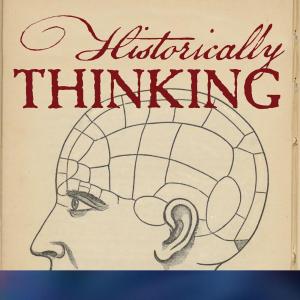Historically Thinking

Episode 321: Amazing Iroquois
When on April 9, 1865, Ulysses S Grant received the surrender of Robert E Lee, one of the staff officers who accompanied him was Ely S. Parker. He was a Lieutenant Colonel in the Union Army, an engineer, and a friend of Grants from Galena, Illinois. But he was also a member of the Wolf Clan of the Seneca, one of the Six Nations of the Iroquois or Haudenosaunee. And not only was he a member, but indeed the Sachem of the Six Nations. So it was that a man who was not actually a citizen of the United States drafte d the official copy of the terms of surrender which Grant and Lee signed. Parker was one in a lineage of people who shaped the modern conception of the Six Nations. He was preceded by his uncle Red Jacket, and succeeded by his friend and adopted Seneca tribe member Harriet Converse, and his nephew Arthur Parker. All of them shaped a history of what Arthur Parker– in a ten-volume unpublished work–called “the amazing Iroquois “. John C. Winters describes their story in his new book The Amazing Iroquois and the Invention of the Empire State. He is Assistant Professor of History at the University of Southern Mississippi. For Further Investigation The most recent mention of the Haudenosaunee on the podcast was in my conversation with Dean Snow, an eminent archaeologist who has excavated numerous Haudenosaunee sites in New York State and beyond. An important conversation on reintegrating Native American history into a broader narrative was with Jim Horn, when we had a conversation about the great chieftain Opechancanough. And self-representation by native leaders was the focus of an old conversation with my colleague Jane Simonsen, way back in Episode 58: What Black Hawk Wore "Red Jacket's Peace Medal returned to Seneca Nation after 116 years at Buffalo museum" Seneca-Iroquois National Museum Arthur Parker, Seneca Myths and Folktales Letter from Ely S. Parker to Harriet Converse Al: So throughout the book, you play around with this idea of Iroquois exceptionalism. If my old [00:02:00] professor, David Hollinger, was on the podcast, he would immediately protest that American exceptionalism is wrongly used. It was invented by Stalin or the head of the Communist Party or something like that. But we won't get into that. You're enjoying playing around with Iroquois versus American exceptionalism, but defining our terms, what is Iroquois exceptionalism? I trust that it's not that Iroquois lacked a feudal class so that therefore their approach to post capitalism or socialism is different. John: No. No, not quite. What at this notion of Iroquois exceptionalism is of course at the heart of the book, but it's an invented category though, similarly, so it is really Capturing the idea that the Iroquois have this unique place in American history. If you're walking down the street in New York City or you're moving through New York State and you ask people what do you know of the Iroquois? Or have you heard of the Iroquois? The responses that [00:03:00] often spring to mind are these exceptional things like the Skywalkers, right? The Iroquoian steel workers most of them Mohawks, who are building the Empire State Building, and basically New York City's skyline, not only using Iroquoian mussel, but also Iroquoian steel. Some of them who have more like anthropological interests and maybe political theoretical interests are really interested in this idea that the Iroquois in effect invented modern American women's. Rights because as a matrilineal society, the Iroquois had this or granted women this extraordinary and exceptional power. So during the mid 19th through the early 20th century, we see lots of these suffrage reformers turn to the, I Iroquois to say, if we America, the United States, this progressive white nation can't [00:04:00] even do the same thing that these unquote Savage Indian are. Na, sa quote unquote, Savage Indian neighbors are doing and granting women equal repres...






 Visit Podcast Website
Visit Podcast Website RSS Podcast Feed
RSS Podcast Feed Subscribe
Subscribe
 Add to MyCast
Add to MyCast